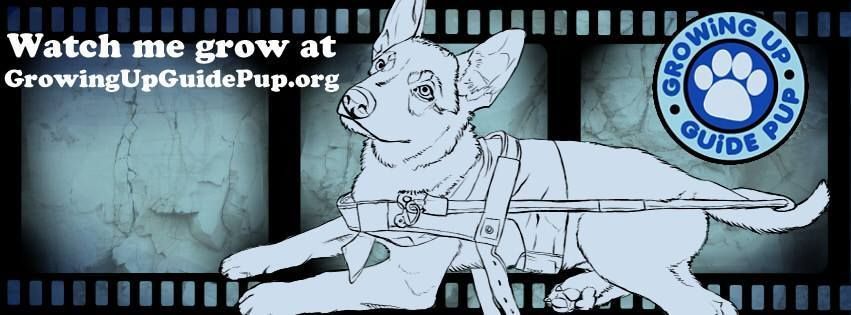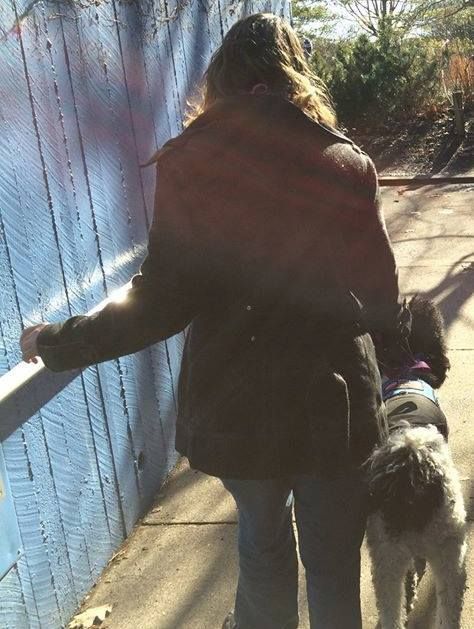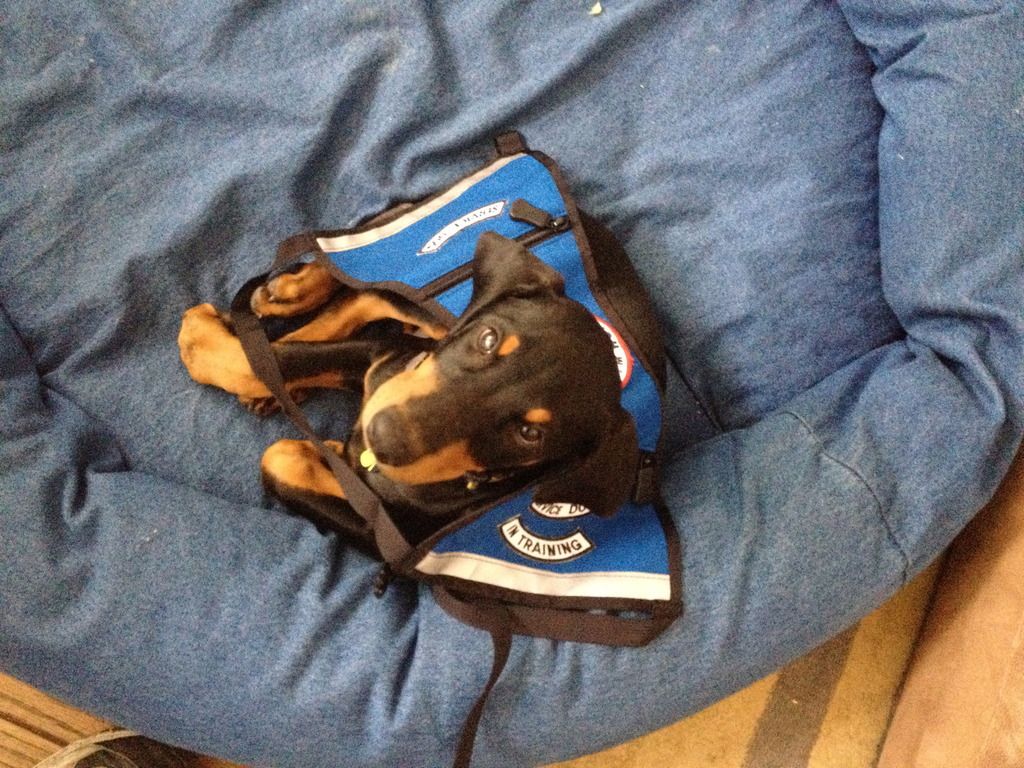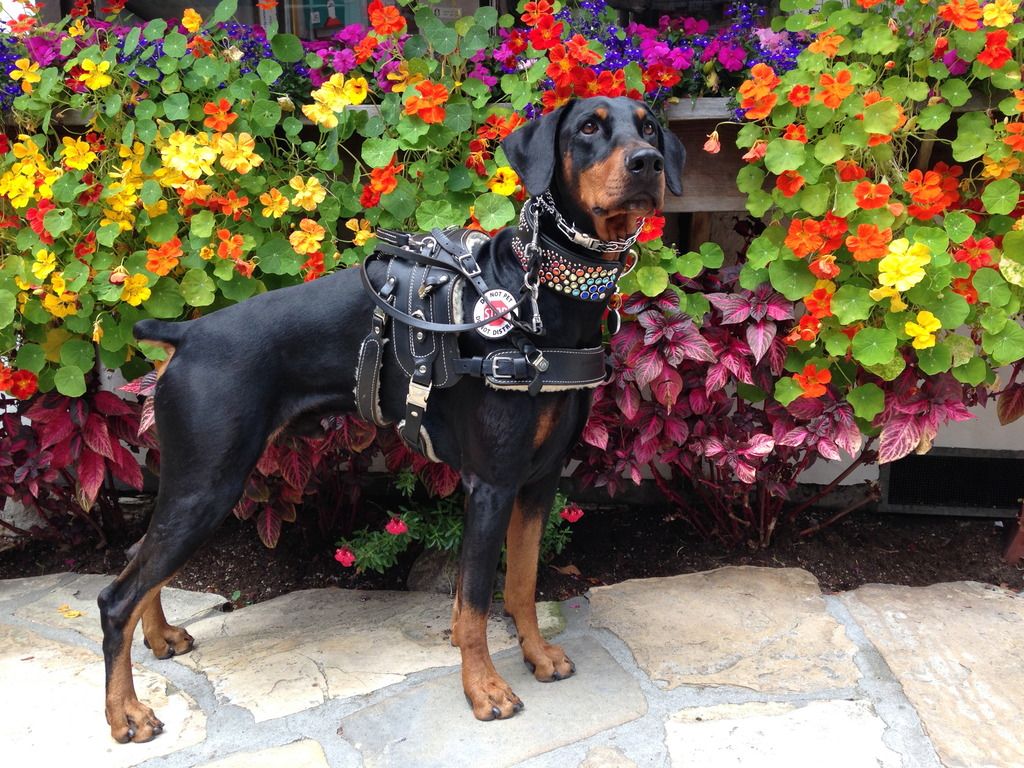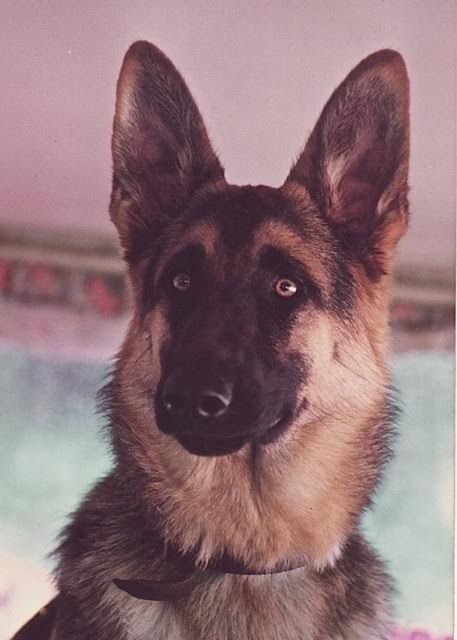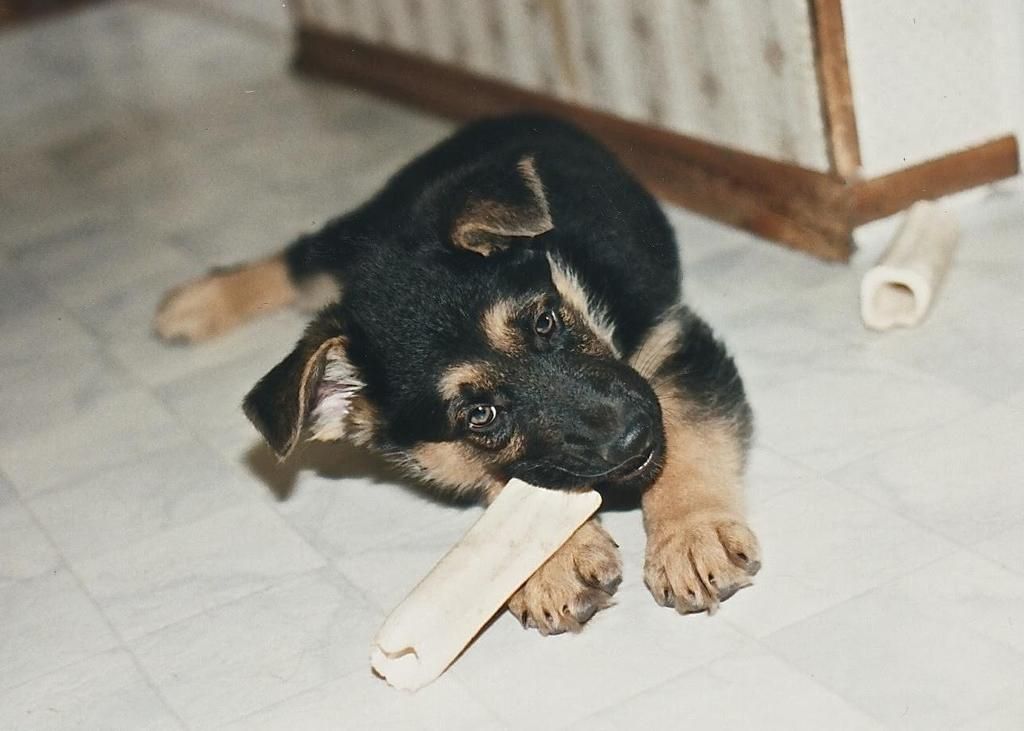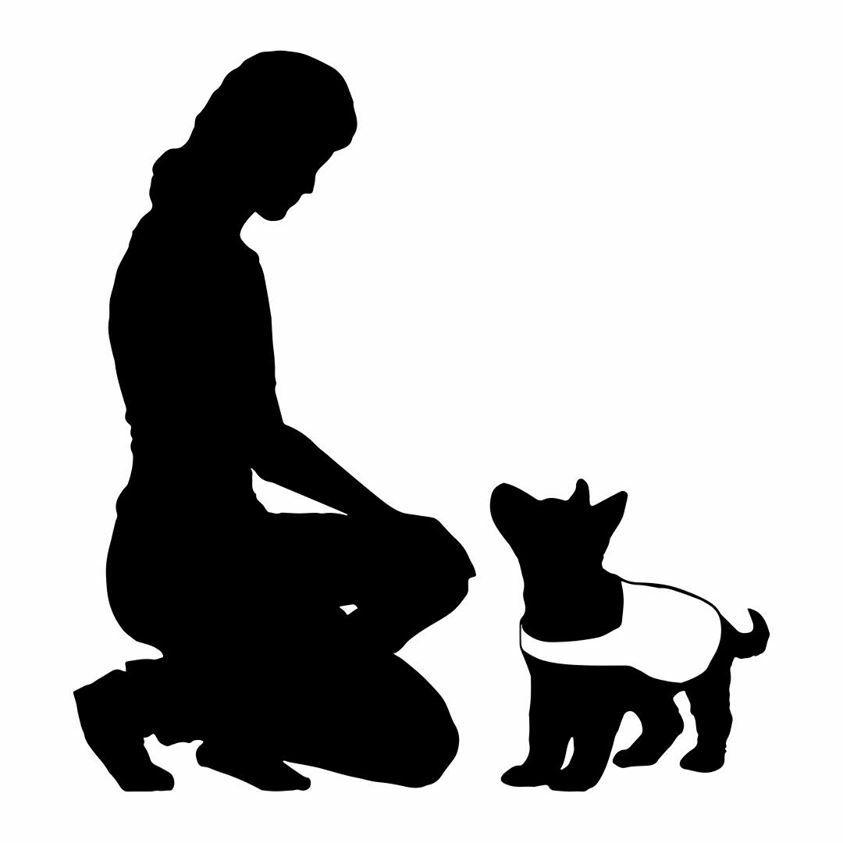Oh, boy.
I did all the research, of course.
Which breeds would be best suited for me, different training
techniques, different training tools … I thought I was prepared.
When I picked up my nine-and-a-half-week-old ball of fluff, I had all
but convinced myself that I could tackle just about any obstacle
thrown my way. I had the support of other trainers, of course, and
other handlers who had been in my position. When I brought Vincent
home, I was so excited. He was going to be the most amazing dog ever
and everything was going to be fabulous and I was going to have so
much energy. Then when it was all over, I’d have this wonderful
dog ready to go out into the world and help me grab it all by the
horns.
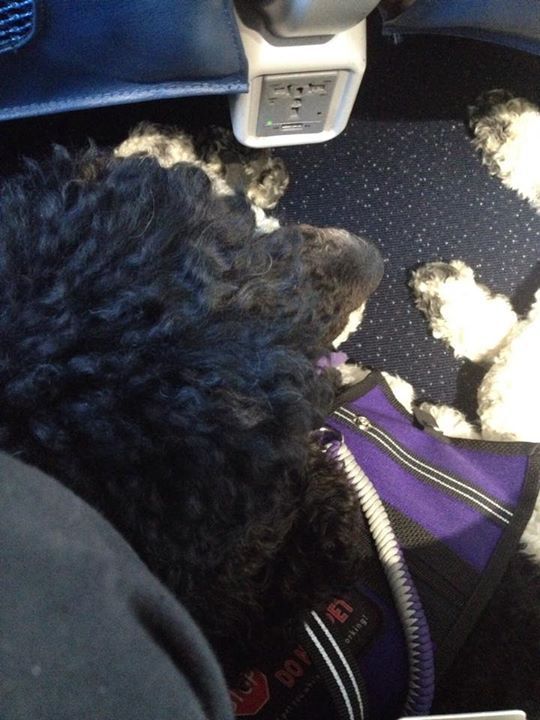 |
| Vincent traveling on an airplane. |
Let me explain the reality of raising
and training your own service dog from puppyhood. It’s not quite as
I thought it would be. I enjoy sports references, so instead, think
of it as though you’re about to go twelve rounds with Evander
Holyfield. And then, for just a moment, imagine that you’re in that
ring, you’ve got no boxing gloves, and you’ve never, in fact, thrown a punch in your entire life. Now you’ve got to figure out
how to survive those twelve rounds. Holyfield is faster than you are,
and he can throw a pretty good punch, too.
This is kind of what it’s like to
raise and train your own service dog.
Round one isn’t too bad. You and your
opponent are just getting to know each other. You’re just starting
to figure out what works with him. Should you duck, or lunge? In dog
training world, we’ll call this the basics stage. Before you start
working with a puppy, you need to get to know that puppy. You need to
figure out what sort of things work for that dog, and which sort of
things don’t. There’s a myth in the training world that all
techniques work the same on all dogs. This is a fallacy. Every dog is
different, just like people, and understanding that will help you to
understand that sometimes you have to approach things a little
differently with dog B than you did with dog A. So, you’re getting
to know your dog. You can recognize his ‘I have to potty’ face.
You have realized that he’s more motivated by his toys than his
treats. You have noticed when he’s more alert, more attentive.
And now, it’s time to dance. You
throw the first punch. You might even throw a few really good ones,
and you’re in the ring, and your feet are moving as though you’re
possessed by Muhammad Ali, and you’re doing a pretty good job. You
are gaining some headway, and you begin to think that twelve rounds
might not be too bad.
By round three though, you’re
starting to lose some steam. We’ll call this the ‘oh my goodness, my dog is growing up’ stage of the training process. When a puppy
is first learning, everything is great. They seem to catch on easily.
You might even try to rush things. I know I did at one point.
“Well, my pup knows sit, stay, and
down, so we can move on to this now! Wow, he’s doing so great! This
is the most amazing thing ever! I didn’t know I was a dog training
guru!”
Think again.
By the time Vincent was about six
months old, he had been house-trained and knew most of his basics. I
thought these basics were pretty solid. He listened well. We had
bonded. We were the best of friends. This would be the stage of the
fight just after you’ve gained some ground against Holyfield.
You’re feeling pretty good about yourself, and for a moment, just a
small sliver of time, you let your guard down. Holyfield sees his
opening and cold-cocks you right in the face.
Vincent was being a bit … rebellious.
All of a sudden my gorgeous, well-trained puppy was unrecognizable.
He was barking at other dogs, running around and hopping on things and on people. He seemed to have forgotten how to sit, as though he
simply couldn’t get his legs to complete the motion. I felt as
though the wind had been knocked out of me.
This is the
not-so-glamorous side of raising and training your own service dogs.
There are lots of ups and downs. Fear stages. Rebellious stages.
Training hiccups. There are going to be several times when you’re
going to doubt yourself during these times. I don’t know how many
times I sat in my living room during times like these, head in my
hands as I played over every day of the past several months in
Vincent’s life and wondered if I had gone wrong, and where, and how
to fix it if I had.
But the thing is, one punch
doesn’t necessarily lose you the fight. Sure, your head is spinning
a little bit, and the world looks like some blurry melting pot of
colors and unrecognizable shapes. It takes you a minute to shake it
off and make the world right itself again. You might need a bit of a
break and a little pep talk from your cheering squad. In times like
these with Vincent, I often turned to my friends, and to trainers and
other service dog handlers in the community. In doing so, I learned
something that turned out to be very valuable: That I was not alone.
That other handler’s dogs went through fear stages. That other
handlers’ dogs had chewed their favorite pair of shoes despite
seven months of never showing interest in those things at all. And
most importantly, that other trainers and other handlers had doubted
themselves. Even those that were vastly more experienced than I
was.
So, now you’ve had a bit of water,
and the world has stopped spinning, and your cheering squad is
screaming your name, and it’s time for another round with
Holyfield. The little break helped you refuel a little bit, and your
fans have definitely boosted your ego a bit, too. The bell rings, and
you’ve already taken one hit, so you go back out there to face
Holyfield knowing what that fist to the face feels like. You can
anticipate it next time. You can work around it. You might even be
able to throw a few more punches of your own.
I’m going to be honest. Vincent went
through several of these stages. He had a lot of problems that at the
time seemed like mountains I would never be able to scale. There were
times I was sure that I had failed him, and in doing so, had failed
myself, and that he would never be able to make it as a service dog.
The truth of the matter is the plain
and simple fact that owner-training and raising your own service dog
prospect is hard work. It’s an emotional roller-coaster with lots
of ups and downs. The truth of the matter is that no matter how hard
you work, no matter how much time you put in or how much you think
you’ve analyzed everything, some dogs, most dogs simply
aren’t cut out for service work, and you still may fail. I thought
I would.
However, if you
learn to roll with the metaphorical punches, it can be a very
rewarding thing to do. Vincent did succeed. He’s getting ready to
“graduate.” And the truth of the matter is, even though I still
sometimes feel like I’ve spent twelve rounds in a boxing ring and
gotten the stuffing knocked out of me, at the end of the day, I’m
still standing, and there is nothing that I have ever been more proud
of in my entire life than the seemingly insurmountable task that
Vincent and I have tackled together.
Submitted by Kayla Hoyet
Have a service dog or puppy raising story you'd like to share? Send it to us! We will be featuring posts by guest authors on a regular basis.
